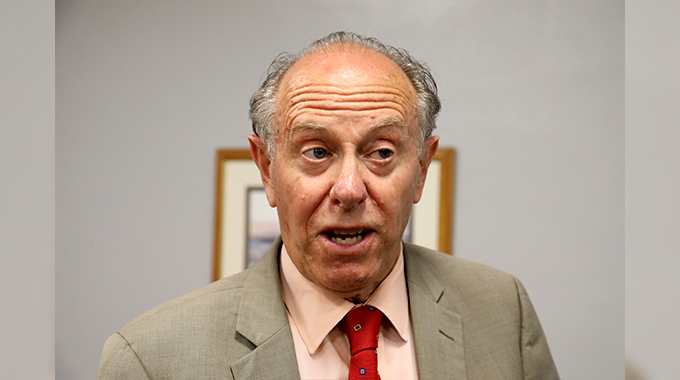Govt to produce 50 000 STEM graduates in 10 years

Pamela Shumba, Senior Reporter
THE Ministry of Higher and Tertiary Education, Science and Technology Development will in the next 10 years produce 50 000 STEM (Science, technology, engineering and mathematics) technologists and engineers meant to industrialise and modernise Zimbabwe’s economy.
Professor Jonathan Moyo said his ministry would achieve industrialisation through the STEM263 Initiative whose time frame is between 2016 and 2026.
“We’re developing STEM students at A-level through full scholarships to students who obtain grades “C” or better in two or more subjects comprising Mathematics, Physics and Biology. This pool is to enable the country’s universities to recruit stemitised students for STEM degrees and STEM careers.
“Over a 10 year period, this intervention, which is projected to develop some 50 000 STEM technologists and engineers for the New Economy, is well defined and specifically targeted at disciplines, professions and trades that are necessary to drive Zimbabwe’s industrialisation and modernisation,” said Prof Moyo, while addressing delegates at the 16th Zanu-PF annual national conference in Masvingo last week.
He said in 2016, Higher and Tertiary Education institutions were given $26 million under ZIMDEF to support various STEM programmes.
“The total Zimdef STEM Support for the year was $26 556 081 in 2016, 5 136 Lower A-level students were supported under Zimdef at a cost of $6 181 403. These students will be supported for Upper A-level in 2017 while a new Lower A-level stream will get full scholarships next year. The design of a National Human Capital and Skills Audit instrument to assess the specific skills that the New Economy needs, and to develop the necessary response from higher and tertiary education to train and produce these skills for the private and public sectors has been drafted. The National Skills Audit will be carried out in 2017,” said Prof Moyo.
Prof Moyo added that the country’s 14 teachers colleges that have an enrolment of 27 000 students, were in the process of reviewing the feasibility and appropriateness of upgrading and stemitising their Teachers education curriculum with a view to transforming themselves into degree offering institutions. “In this regard a review committee headed by Professor Chipo Dyanda is busy at work and will report back end of January 2017.
“As a Zim-Asset response to Zimbabwe’s quest for industrialisation, polytechnics will leave the training of artisans to Industrial Training and Trade Testing Centres while they will transform into degree offering institutions that train technologists under the banner of STEM263. A review committee chaired by Professor David Jambgwa Simbi, like its counterpart in teacher education, will report back end of January 2017,” said Professor Moyo.
He said there was a need for Government to establish more Industrial Training and Trade Testing Centres to accommodate thousands of schools leavers.
“Every year an average of 300 000 students take O-level examinations and out of this number about 30 000 proceed to A-level and another 20 000 enrol at tertiary institutions to do teacher or polytechnic education. Some 250 000 are thus left in limbo from a skills point of view.
“While some of these end up taking short courses at Vocational Training Centres, there’s a need to enable this critical pool of students to enrol at Industrial Training and Trade Testing Centres so that they can be certified artisans,” said Prof Moyo.
He said the country has five such centres in three provinces, three in Harare, one in Bulawayo and one in Mashonaland West.
“These five have a combined enrolment of 9 000 students. This enrolment is a far cry from the 250 000 O-level school leavers who need such training every year.
“It is proposed that there should be two such centres per province and we hope to start implementing this policy in 2017,” said Prof Moyo.












Comments